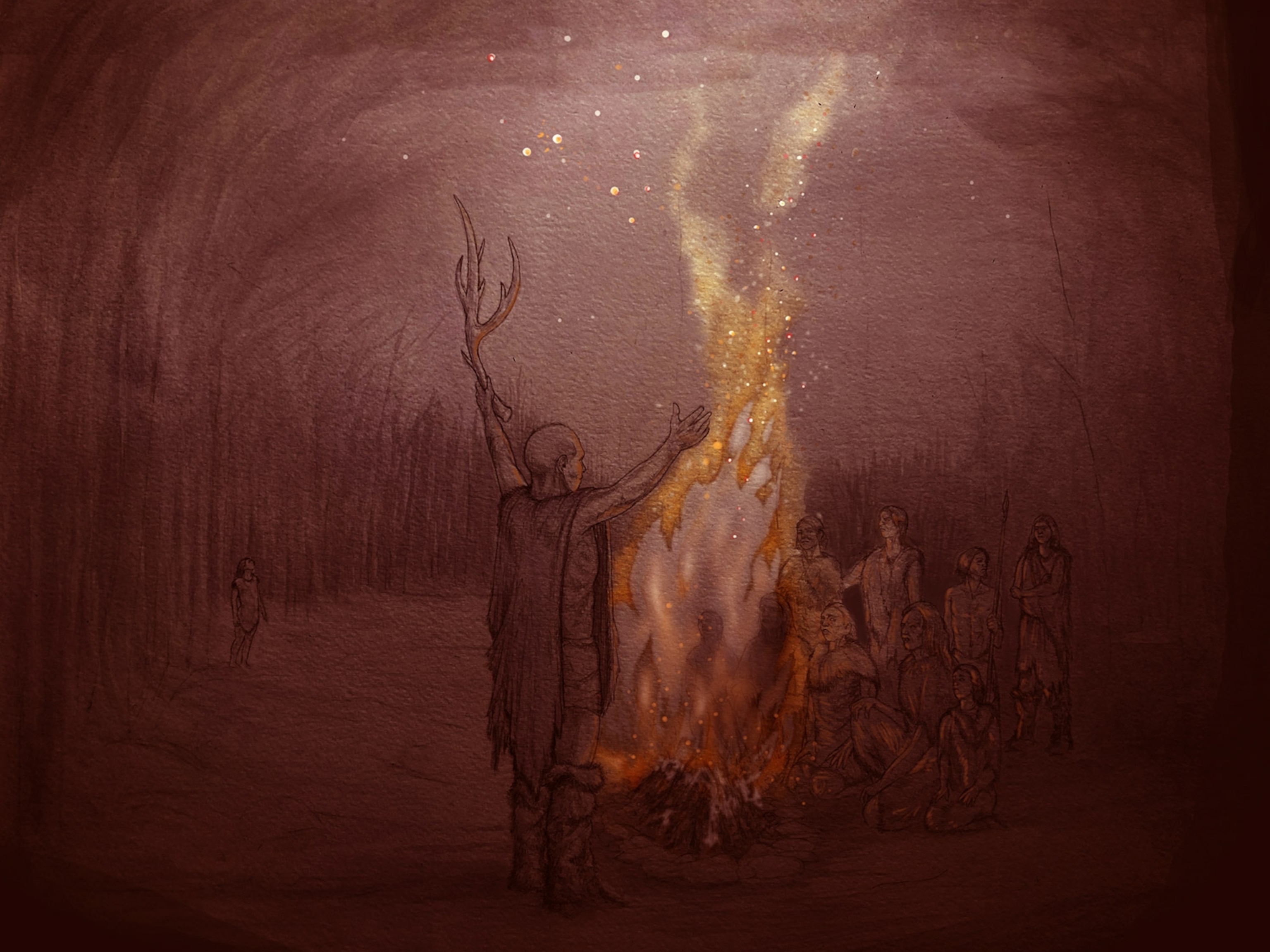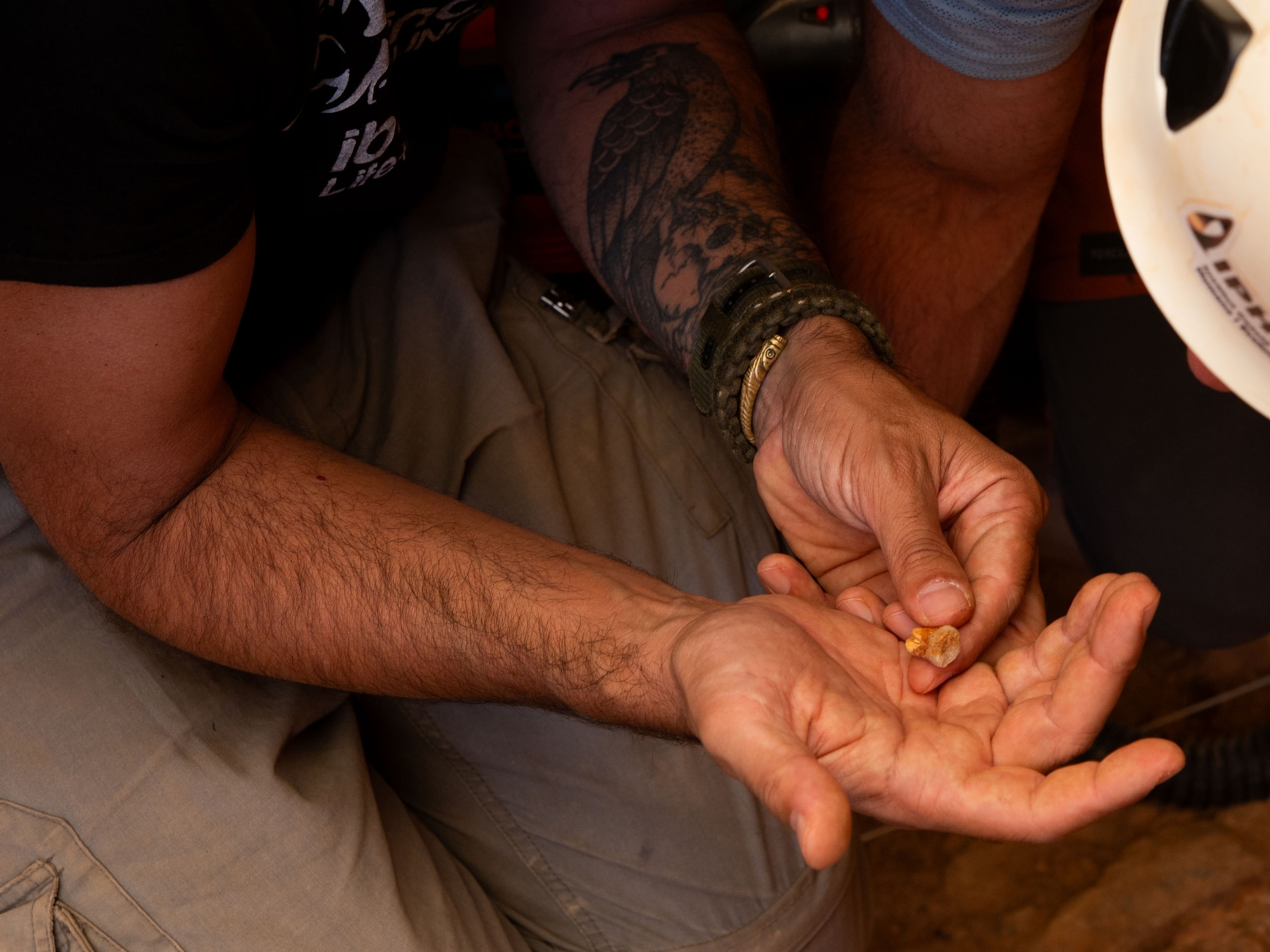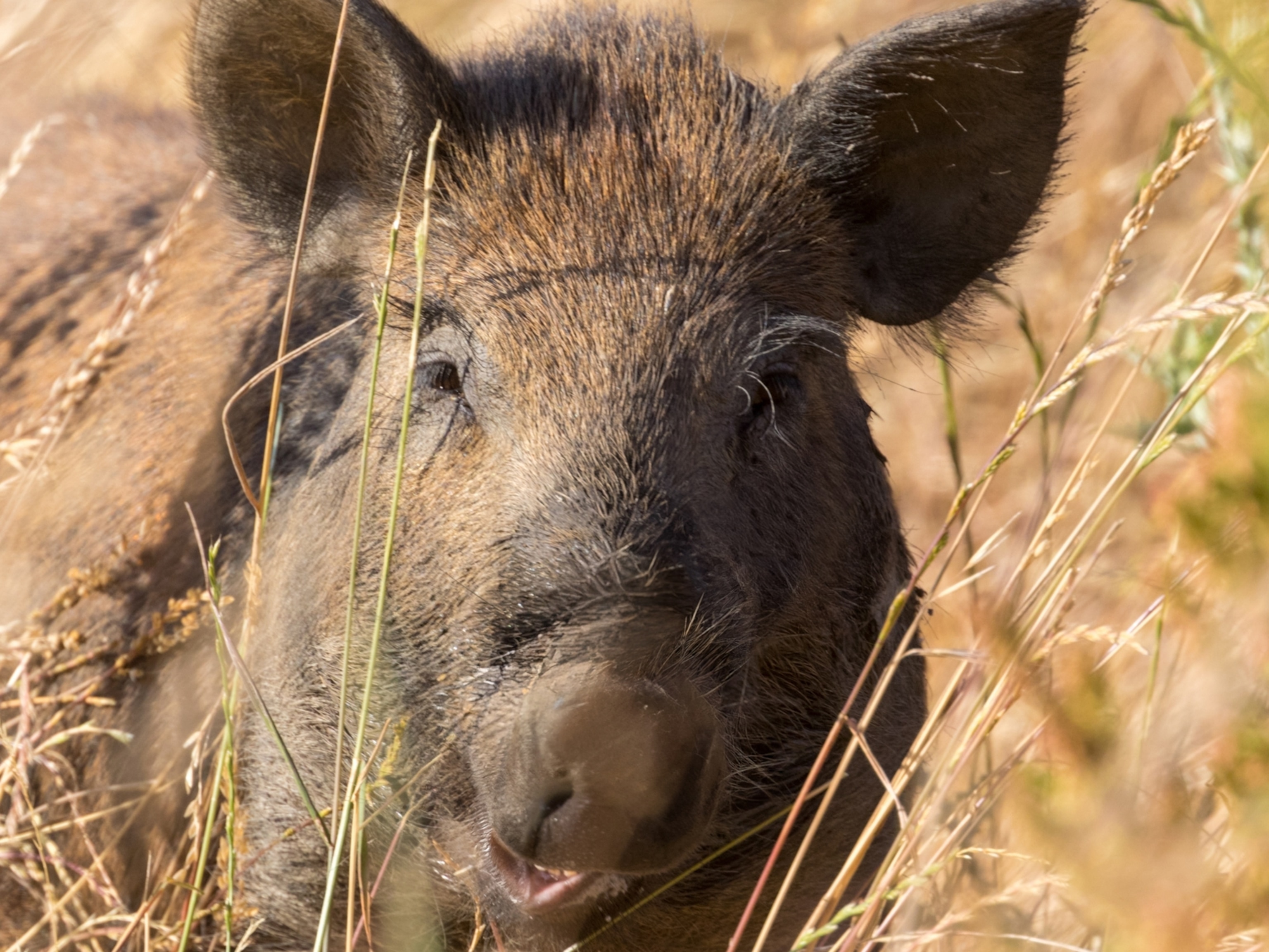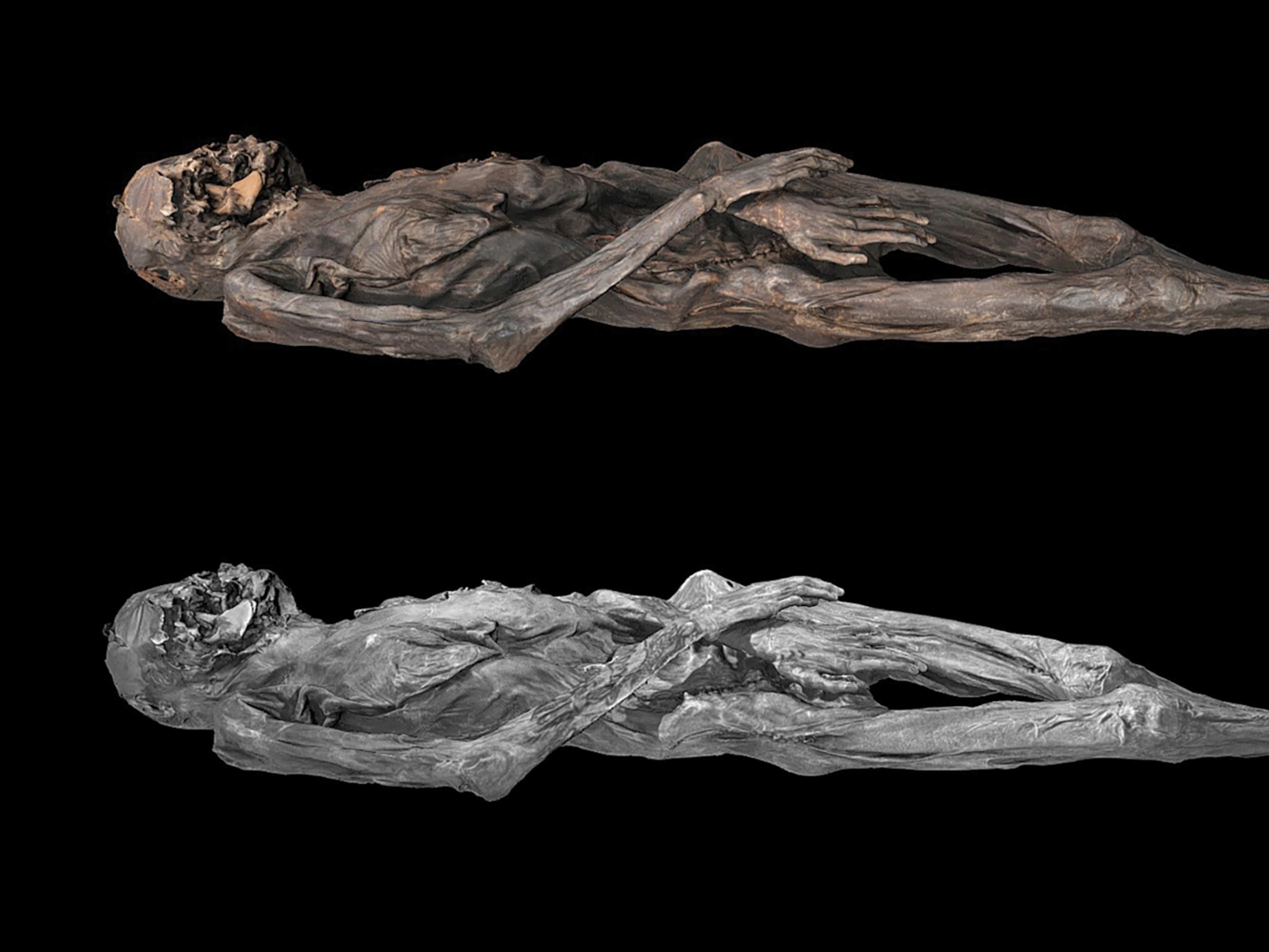Some 45,500 years ago, on the Indonesian island of Sulawesi, ancient humans ventured into a cave and sketched out the rotund form of a native pig, complete with a bristly back and face warts. Archaeologists now believe this portly swine marks the oldest drawing of a creature yet discovered anywhere in the world.
In a study published this week in Science Advances, an image of the drawing shows the animal apparently looking at two other pigs mid-squabble. The outlines of two human hands are positioned near the rump of the pig, and a bristly patch in the center of the mix might hint at a fourth creature.
The painting, made with strokes of red ocher on the interior cave walls, was discovered in December 2017 by local archaeologist Basran Burhan, currently a Ph.D. student at Australia's Griffith University. He led a small team to search caves in South Sulawesi for traces of ancient human activity when he discovered the newfound pig art at a site known as Leang Tedongnge.
According to Adam Brumm, first author of the new study and archaeologist at Australia's Griffith University, the ancient porcine painting may depict prime hunting trophies.
“They’re very, very, small little pigs, but these ancient artists portrayed them with such resplendent fatness, which I imagine was something to do with their interest in killing the largest and fattest pigs they could find, which yielded the largest amount of meat and protein,” he says.
While the newfound painting is the world’s oldest art depicting a figure yet found, it’s not necessarily the oldest art. “It depends on what definition of ‘art’ you use,” says study co-author Maxime Aubert, an archaeologist at Griffith University. Some strikingly ancient glimmers of creativity have been recently identified, including a 73,000-year-old hashtag-like doodle from South Africa that some believe to be the oldest known drawing.
But the newfound paintings do add to an increasingly rich tradition of cave art discovered throughout Indonesia. In Sulawesi alone, scientists have identified imagery in some 300 caves over the last 70 years. This includes the next-oldest figurative cave paintings—a vignette at least 44,000 years old that portrays the thrill of an ancient hunt as two- to four-inch-tall humanoids chase down pigs and diminutive relatives of water buffalo.

The array of discoveries in Indonesia have started to shift scientists' thinking about when, where, and how the first sparks of human creativity flew, Aubert says, turning away from the "Eurocentric view of the world" that sophisticated painting began only when humans arrived in Europe.
Early glimmers of art
To determine when the large pig painting was created, an international team of researchers relied on radioactive uranium, which naturally forms in limestone. As water percolates through the cave, it dissolves bits of the limestone and its uranium, depositing them both in thin sheets along the cave walls. Since uranium decays into thorium at a known rate, scientists can estimate a minimum age for the art by analyzing the relative amounts of these two elements.
The researchers used a small chisel to remove a knobby cluster of minerals deposited on the rear leg of the most complete pig figure for uranium-thorium dating, and the results indicated that the painting was at least 45,500 years old. It's also possible the paintings are even older, since this method only dates the mineral deposits on top of the art and not the painting itself.
Without additional dating of the other elements in the scene, the authors can't yet confirm if the entire mural was created all at once. One of the partial pigs is made of two different color pigments, which the authors note might reflect multiple periods of painting.
Study co-author Adhi Agus Oktaviana, a researcher at Pusat Penelitian Arkeologi Nasional in Jakarta, Indonesia, says he gained fresh respect for the ancient artists as he digitally traced photographs of the figures for the study.

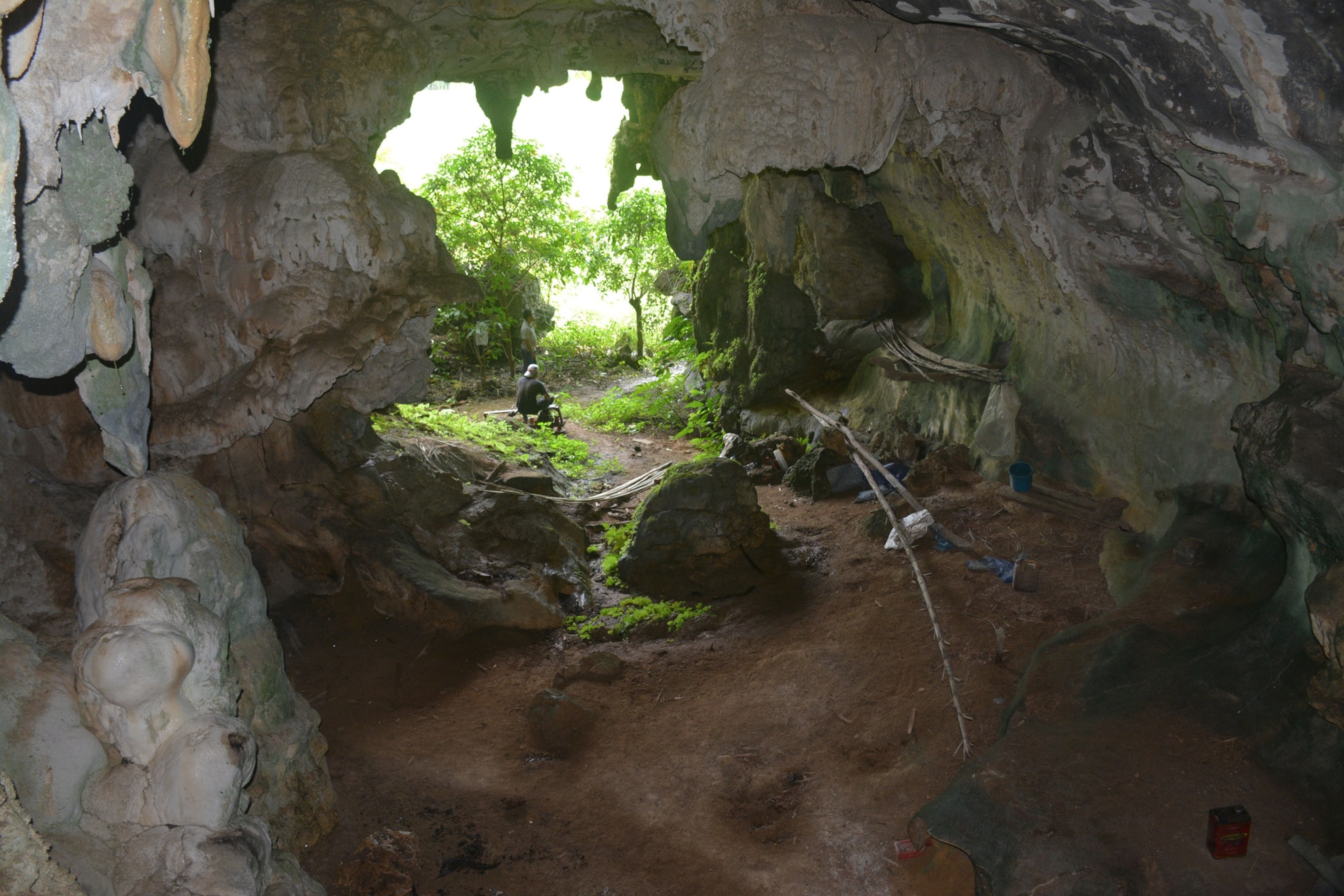
“I think it’s incredible. I think they knew exactly how to use the tools for drawing, how to manage the composition for the panels,” says Oktaviana, who is also a Ph.D. student at Griffith University.
Such early glimmers of art reflect a vital shift in the way our ancient ancestors engaged with their environment and the surrounding landscape, says April Nowell, a Paleolithic archaeologist at the University of Victoria in British Columbia who was not part of the study team. "They're imbuing their place with meaning, significance, maybe symbolic dimension," she says.
The new Science Advances study also documents the age of another pig painting in a nearby cave—Leang Balangajia 1—discovered by the team on a 2018 expedition and dated to at least 32,000 years ago. And the age of human activity on Sulawesi Island was previously confirmed by the presence of tools used for ocher processing at the nearby site Leang Bulu Bettue, buried in sediment layers dating to at least 40,000 years old.
"It’s possible that they were using that pigment to create the rock art, but we haven’t been able to make the direct connection between the [tools] and the rock art itself," says Brumm. Still, with the number of cave art finds of similar age in the region, Brumm thinks the connection is probable.
Changing conversations
Until recently, much of the scholarly conversation around sophisticated cave paintings has centered on Europe. The menageries that race across the walls of southern France's Chauvet-Pont-d'Arc cave date to roughly 36,000 years old. The herd of bison dancing on the ceiling of Altamira in northern Spain are from the same time period. And the crowd of outstretched hands and red disks of Spain's Castillo cave date back more than 40,800 years.
But in 2014, a team including Aubert and Brumm flipped the script when they announced the discovery of cave paintings on Sulawesi that were at least 39,900 years old. Up to then, the artworks were presumed to be no more than 12,000 years old.
“It really erodes that idea of Europe being the finishing school of human evolution,” Nowell says. While the newfound creature is just a smidgen older than the previous record-holder, its discovery adds even more depth to the art in the region.
"Some people could say it’s just another pig," Nowell says. "But that’s not the point, it really speaks to a larger sustained change in behavior."
The increasing number of discoveries in Indonesia suggests the possibility that complex artistry could have developed independently in Europe and Asia, Aubert says. Or perhaps humans already had the capacity for such works of art when they trekked out of Africa, “and now we’re starting to find traces of it wherever they went.”
The age of the newfound art also starts to fill a 20,000-year-long blank spot in the archaeological record as ancient humans island-hopped through what is now Indonesia to Australia. Recent excavations in northern Australia have revealed the presence of modern humans at least 65,000 years ago, while evidence for human activity in Indonesia appears to begin 20 millennia later.
Even with the new find, however, a chronological void still remains. There's no reason to think Sulawesi's inhabitants suddenly started painting some 45,000 years ago, Aubert says, adding it's likely older artworks are still out there.
One thing is for sure, Brumm says: More surprises await. “It just shows how much artwork is there waiting to be found on this island," he says. "It’s hiding in plain sight."





